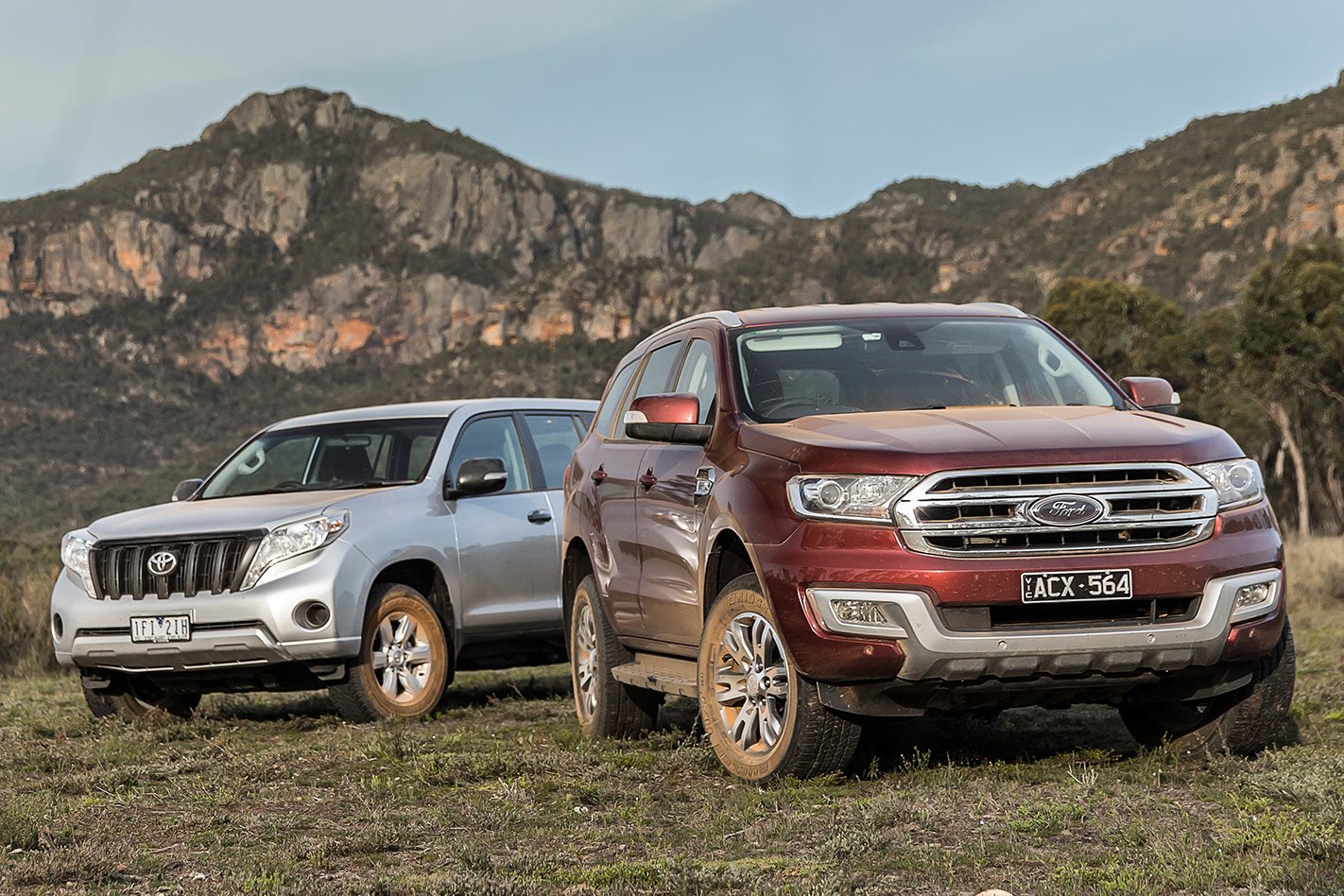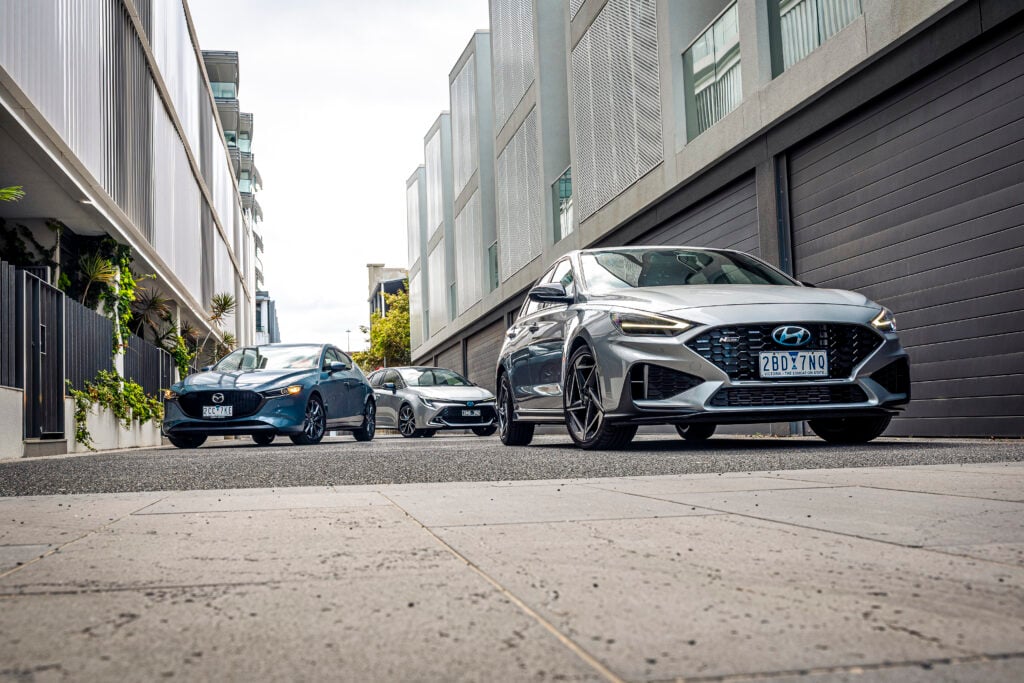Ford’s new seven-seat Everest sets out to scale uncharted territory for the Blue Oval, but standing in its path is the current king of the hill, the freshly updated Toyota Prado.
Can’t wait to see the final scores? Jump to the verdict now.
EVEREST is an appropriate name for something wearing a Ford badge right now. The brand has a mountain to climb as it ends local car-making, and this new SUV can literally do that as a ladder-chassis, seven-seat, proper family off-roader. It’s part of the onslaught of new products for Ford Australia, and is the new kid in town chasing the likes of the market-leading Toyota Prado, its sparring partner here, which has been treated to a new, downsized diesel engine.
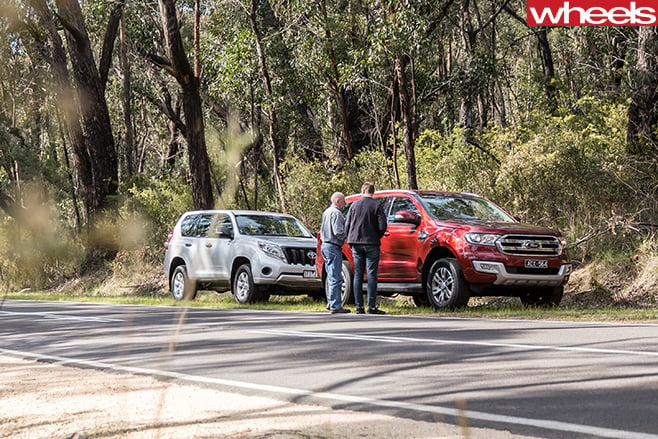
The Thai-built Ford Everest is all-new as an SUV, but it’s based on the successful yet rough and ready Ford Ranger. That means it has genuine off-road capabilities, sturdiness and roominess. It comes as standard with seven seats, and this model here is the mid-spec Trend, expected to be the most popular showroom choice.

For that ask, Everest rides on 18-inch alloy wheels to go with the handsome exterior. That solid look sees a successful translation of traditional Ford truck-like nose with a definite Tonka feel up front, but the more contemporary rump seems oddly proportioned, as if the front and rear were designed for two different vehicles. So too the Everest’s awkward stance: the spaces between the Bridgestones and the wheelarches are huge, and it looks tall and narrow at some angles.

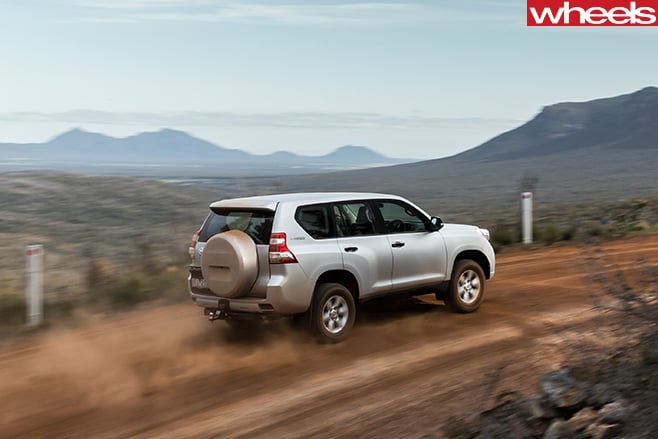
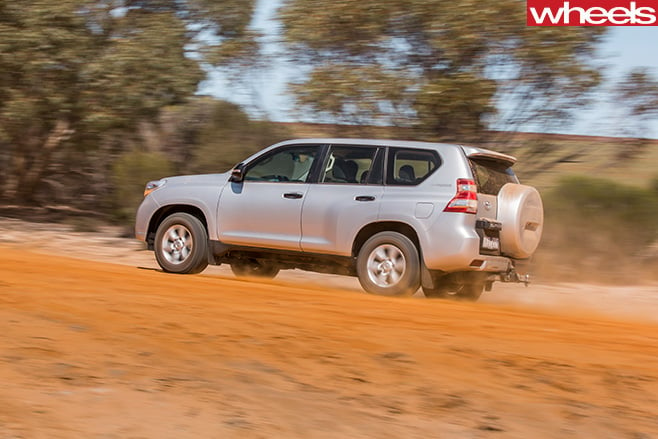
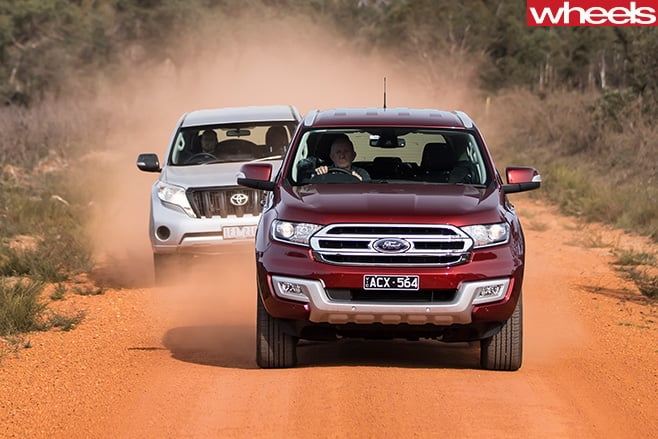
The biggest single ace for Everest is its interior. It’s light years ahead of Prado’s, which looks like a parts-bin special from the ’80s. The velour seat trim on our GX mimics Gran’s Cressida and the centre stack above the 7.0-inch display looks moulded from an off-the-shelf generic HVAC kit. It’s fifty shades of grey, with basic white-on-black square buttons and plain dials. Its hard plastics are utilitarian and scream functional, as opposed to the Ford’s fashionable.
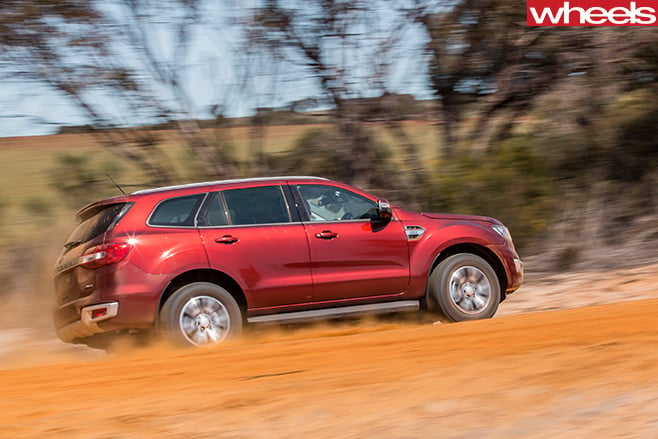
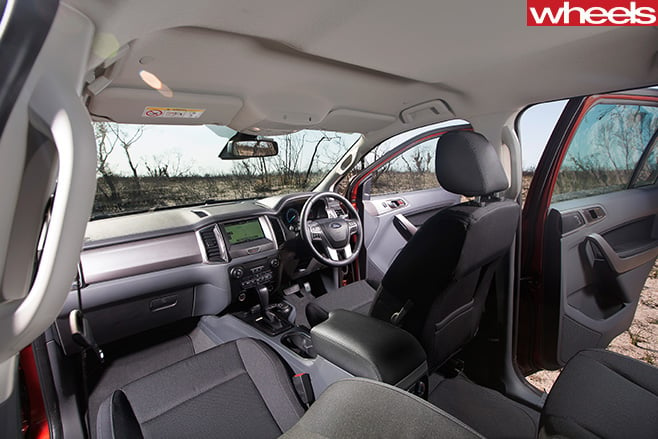
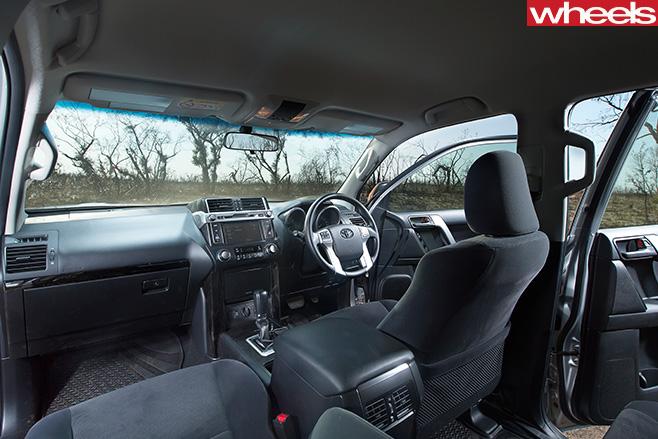
In the driver’s seat of the Prado you’ll notice the spare wheel impinging on rear visibility. And its heavy tailgate opens into traffic. While off-roaders may prefer the easier access when compared with the Everest’s full-size alloy located under its boot floor, you don’t need huge biceps to operate the upward-opening hatch on the Ford because it opens electronically via the key fob.
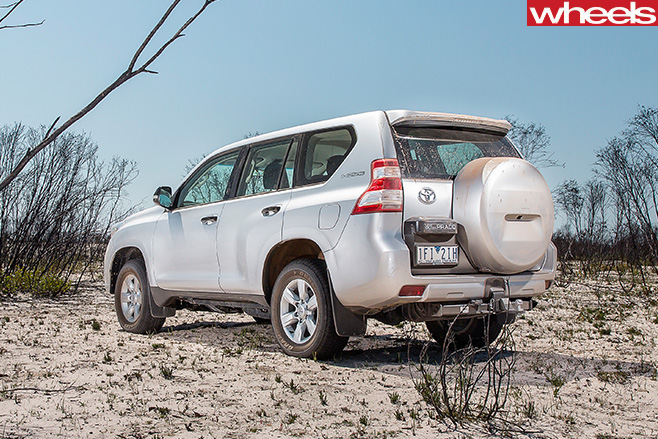
The instant you sit in the Everest’s sculpted driver’s seat, it feels more agile, responsive and energetic. Even if the driving position is hampered by a lack of steering-column reach adjustment, its poise, roadholding and more elastic diesel leave the Prado behind on a winding mountain road. The Toyota rolls much more and can’t deal with its weight as it shifts around during braking, under acceleration and with every driver input.
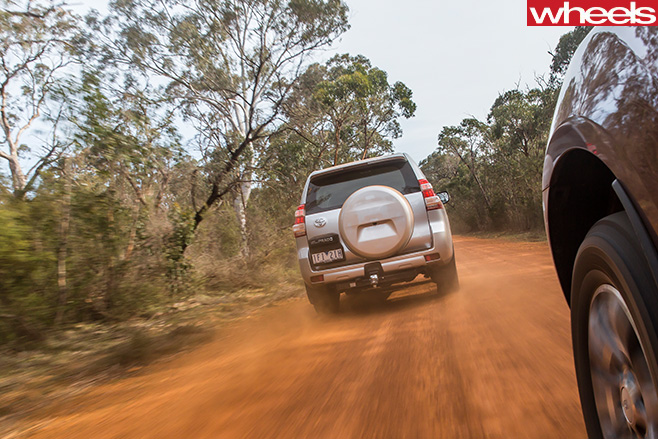
Knocking off the Prado on a twisty section is one thing, but the Toyota still has some distinct advantages. Softer suspension and smaller wheels enable a more supple ride over pock-marked and bumpy roads, with the firm Everest suffering head-toss and movement that makes it a much less cossetting cabin to be in.
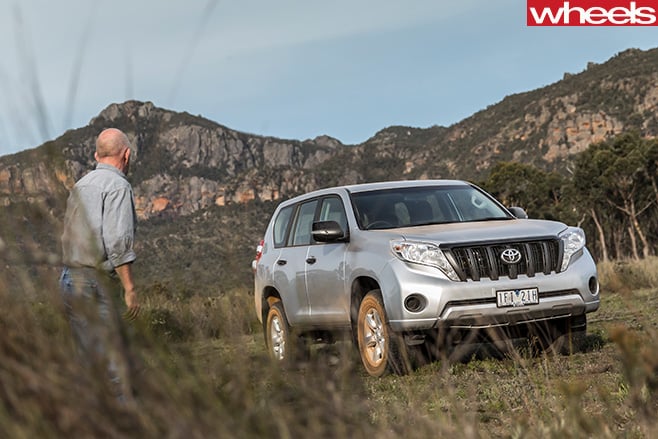
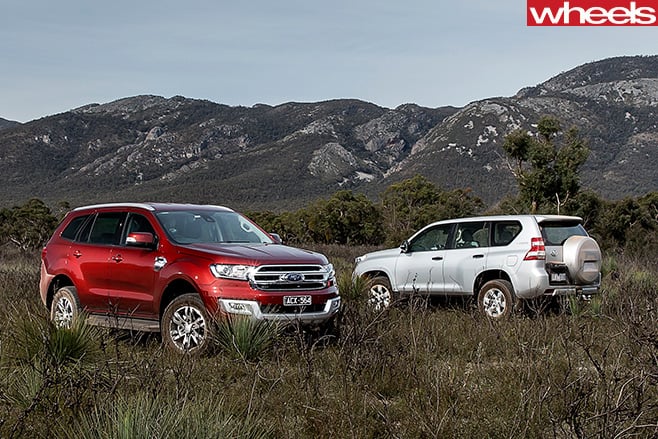
Bringing a new nameplate to this competition will be tough, but the Everest is a better all-round vehicle than the popular Prado. So while the Ford has a mountain to climb, it’s hardly starting from the bottom.
Why Everest is not a Territory
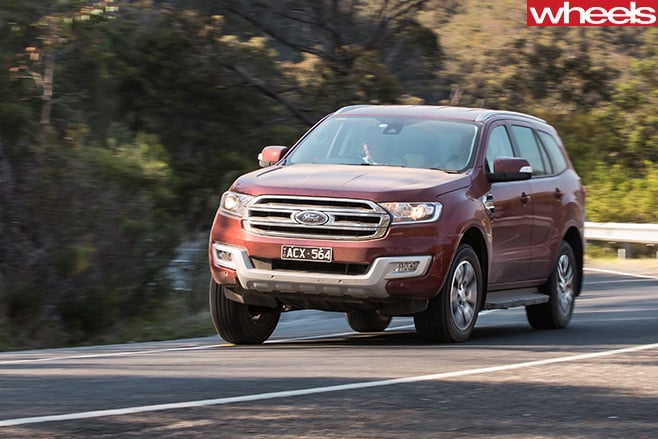
Indeed, Ford Oz will have a two-pronged attack, with the Canadian-built Edge to sit below Everest. Edge uses the same CD4 platform as Mondeo, with Aussie-spec versions expected to get the 154kW/450Nm 2.0-litre turbo-petrol engine. Pricing will kick off from around $45K. Given the success of Territory, Ford may keep the name.
Technology
The Everest wins in terms of connectivity with a pair of 12V plugs up front, another in the rear for second-row passengers and another within the boot’s cargo area. It also has a 230V/150W plug, as well as a pair of USBs and one auxiliary connection.
Prado has only a single USB up front – yet it’s covered, unlike Everest’s, so it is protected against dust – along with a 12V plug, with a second 12V in the rear of the console along with a 220V socket. There’s also another 220V plug in the boot area.
Both come with CD players.
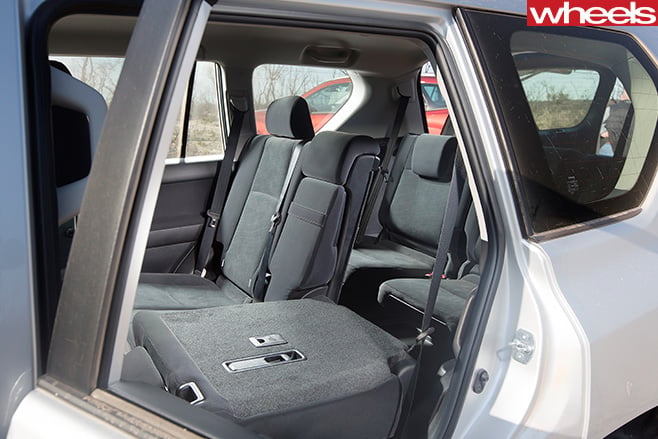
The Ford’s second row doesn’t offer a large enough aperture for access, perhaps a sign that it can only fit smaller occupants. Prado is much better packaged here; if you’re an adult and have to be stuck in the third row, make it Prado’s, as your legs will fit too.
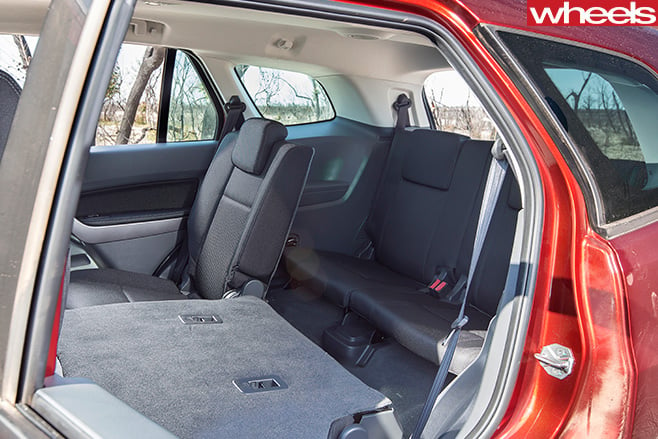
Verdict
FORD EVEREST TREND
Price as tested: $62,090 ** Includes metallic paint ($550) and sat-nav with voice activation ($600).
NCAP rating: 5 stars (Aus)
Fuel economy: 10.4L/100km (test average)
Acceleration: 0-100km/h: 11.6sec
Plus: Excellent dynamics for its type; value for money; safety and tech features
Minus: Awkward stance; build quality; firm ride; engine refinement
Verdict: 6.5/10
TOYOTA PRADO GX
Price as tested: $58,978 ** Includes seven seats ($2500), metallic paint ($550), tow bar ($688), tow ball ($27.35) and trailer wiring harness ($223).
NCAP rating: 5 stars (Aus)
Fuel economy: 10.4L/100km (test average)
Acceleration: 0-100km/h: 13.5sec
Plus: Build quality; ride; spaciousness; off-road and long-distance touring ability
Minus: Dated, plasticky cabin; sloppy handling; lethargic performance
Verdict: 6.0/10

